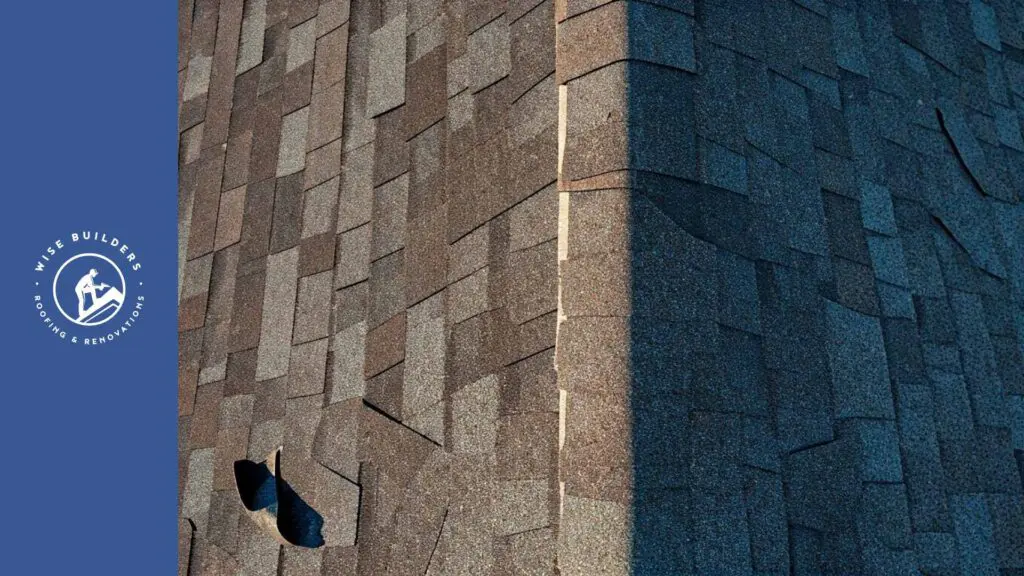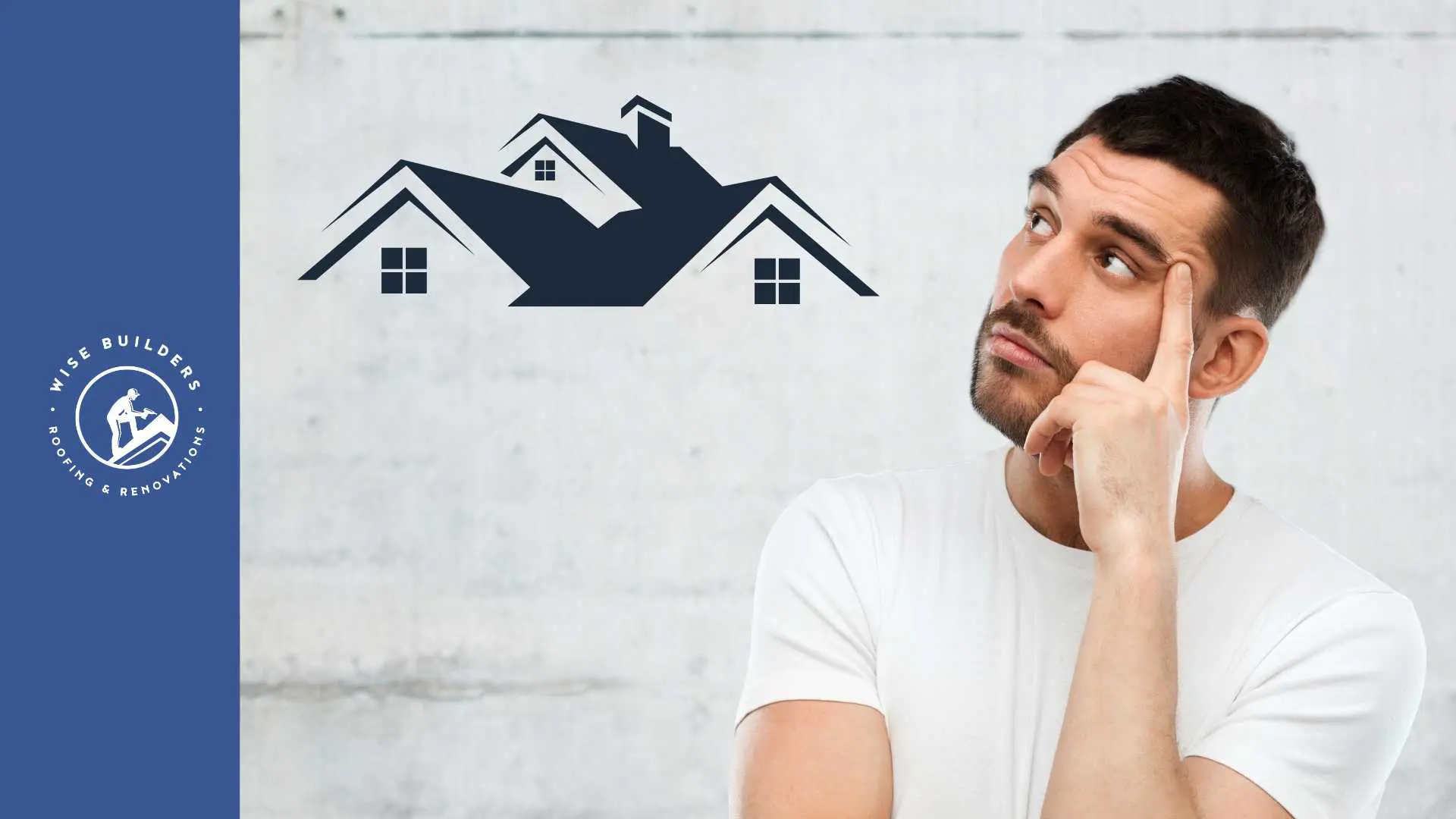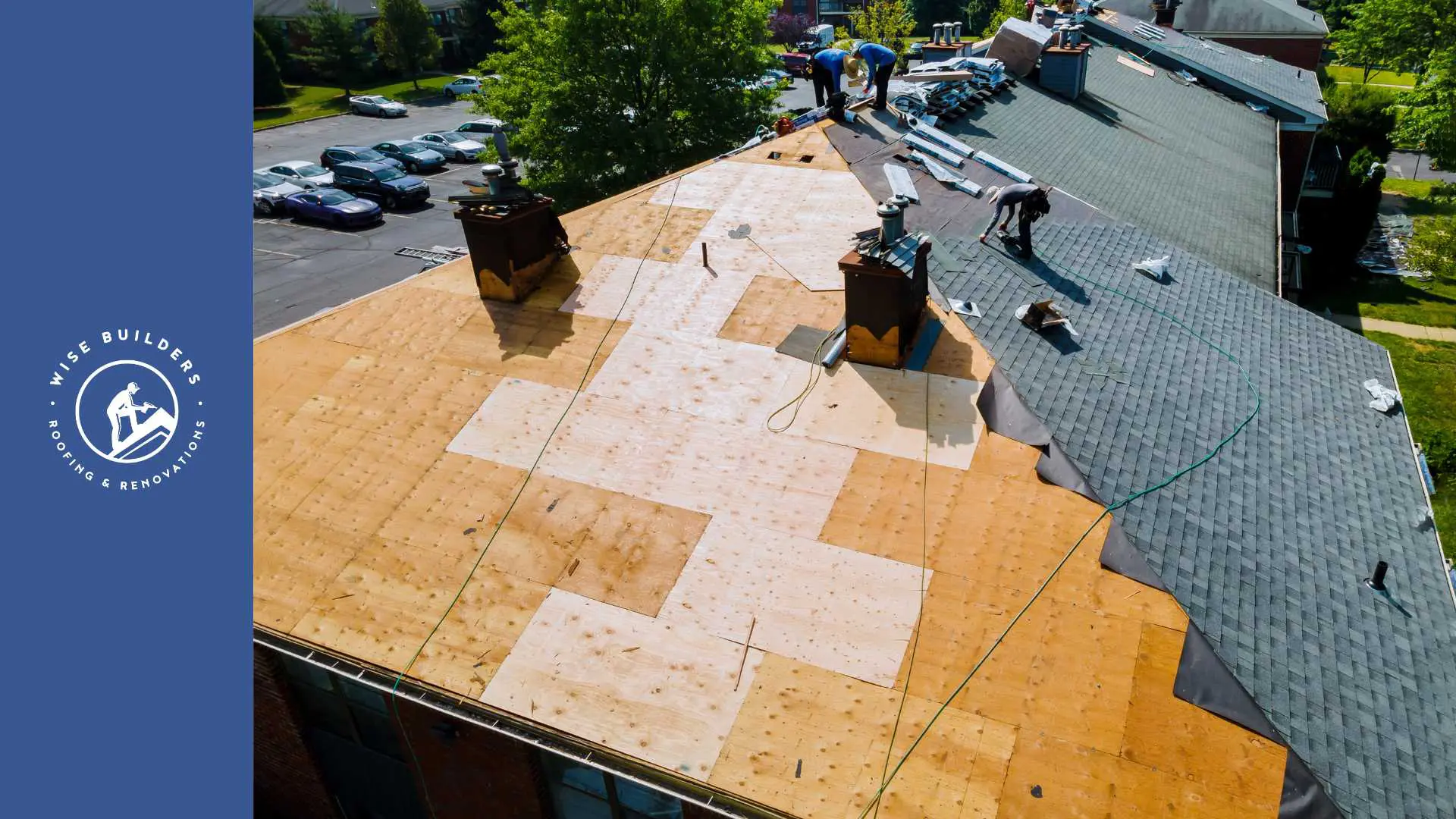
Key Highlights
- Strong winds can inflict significant damage on roofs, compromising shingles and leaving your home vulnerable.
- Recognizing the signs of wind damage is key to mitigating further damage and ensuring your safety.
- Common signs include missing or damaged shingles, lifted flashing, granule loss, and interior water stains.
- Contact your insurance provider and a professional roofing contractor if you suspect wind damage to your roof.
- Regular roof inspections, especially after severe weather, help identify and address potential issues early on.
- Investing in wind-resistant roofing materials and proper installation can minimize the risk of wind damage.
Introduction
As a homeowner, understanding the impact of wind damage on your roof is crucial for protecting your investment and ensuring your family’s safety. Strong winds can wreak havoc on roofing systems, causing damage that ranges from minor shingle displacement to major structural issues. This article will explore the ins and outs of wind damage on roofs, highlighting the signs to look out for, the potential consequences of ignoring the problem, and the steps you can take to mitigate risks and ensure timely repairs.
Understanding Wind Damage to Roof Shingles

Wind damage to roof shingles occurs when strong winds exert pressure on the roof’s surface, causing shingles to loosen, lift, or even tear off completely. This leaves the roof deck exposed to the elements, making it susceptible to leaks and water damage. The extent of the damage depends on factors like wind speed, the age and condition of the roof, and the quality of installation. Understanding the mechanics of wind damage can help homeowners take preventive measures and make informed decisions about repairs or replacements.
Beyond just the force of the wind itself, wind often carries debris which can exacerbate the damage inflicted upon your roof. Branches, loose objects, and even small hailstones can collide with shingles at high velocity, leading to cracks, chips, or complete shingle detachment. These impacts can compromise the shingle’s weatherproofing capabilities, leading to leaks and further damage.
The Science Behind Wind’s Impact on Shingles
The roofing industry recognizes wind as a significant factor impacting a roof’s lifespan. Understanding the science behind wind damage is crucial for homeowners to comprehend the risks and take appropriate preventive measures. Wind speed plays a critical role in determining the potential for damage. As wind speed increases, so does its force, which can exert tremendous pressure on roof structures.
Strong winds can create uplift, a phenomenon where the wind flows over the roof’s surface and generates a lifting effect. This uplift pressure can cause shingles to loosen, curl, or even tear off entirely, particularly if they are not properly secured or if the roof has underlying structural weaknesses.
Furthermore, the design and pitch of a roof also influence its susceptibility to wind damage. Steeper roofs, while generally considered more aesthetically appealing, tend to bear the brunt of wind forces, making them more vulnerable to damage compared to their low-sloped counterparts.
Differentiating Between Normal Wear and Wind Damage
Understanding the difference between normal wear and tear on your roof and damage caused specifically by wind is essential for both maintenance and insurance purposes. While all roofs experience deterioration over time, wind damage often presents unique characteristics that set it apart from age-related issues.
One key indicator of wind damage is the pattern of missing shingles. While age might lead to a few scattered missing shingles, wind damage often results in a more concentrated loss, usually along the roof edges or in a line following the direction of the wind. Granule loss also offers clues. A small number of granules in gutters is typical, but excessive granule loss, especially after a storm, points to potential wind damage.
Lastly, inspect your shingles for signs of lifting or curling. While aging shingles can become brittle and curl at the edges, wind damage often causes shingles to lift away from the roof deck, creating a noticeable separation. If you observe these distinct patterns, it’s crucial to consult a roofing professional for a thorough assessment.
Early Signs of Wind Damage on Your Roof
Recognizing the early signs of wind damage on your roof is essential for preventing more extensive and costly repairs down the line. By being proactive and addressing issues in their initial stages, you can protect your investment and maintain the structural integrity of your home.
One of the first things to check after a storm is your yard for any fallen debris, particularly shingles. Missing shingles, even a small number, can be indicative of wind damage and should not be ignored. Another tell-tale sign is the presence of shingle granules in your gutters or downspouts, signaling that the wind has abraded the protective layer of your shingles.
Spotting Missing Shingles and Their Implications
Missing shingles are one of the most obvious and concerning signs of roof damage. Strong winds can easily rip shingles off the roof deck, leaving vulnerable areas exposed to the elements. The implications of even a few missing shingles are significant, as they can lead to leaks, water damage, and compromised roof integrity.
When inspecting your roof, look for any areas where shingles are completely missing, partially detached, or broken. Pay close attention to the roof edges, valleys, and ridges, as these areas are more susceptible to wind uplift and tend to sustain the most damage.
A single missing shingle can expose the underlying roof deck to water penetration, potentially leading to costly repairs if left unaddressed. Water intrusion can damage insulation, rot wood framing, and even lead to mold growth, posing health risks to your family.
Identifying Lifted or Curling Shingles
While missing shingles are a blatant sign of wind damage, it is essential not to overlook the more subtle but equally problematic issue of lifted or curling shingles. Strong winds can create enough uplift pressure to loosen the adhesion of shingles, causing them to lift away from the roof deck. Over time, this repeated lifting and flapping in the wind can lead to curling and eventual shingle detachment.
Lifted shingles create vulnerable gaps that allow water to seep beneath the shingle layers, compromising the roof’s防水性. This water intrusion can lead to various problems, including leaks, rot, and mold growth.
To identify lifted or curling shingles, visually inspect your roof, paying close attention to the edges and corners of each shingle. Look for signs of unevenness, rippling, or shingles that appear to be peeling away from the roof.
Recognizing Granule Loss and Its Effects
Asphalt shingles derive their weather resistance and durability from the protective layer of granules embedded in their surface. These granules shield the underlying asphalt from the sun’s harmful UV rays and provide a rough texture that aids in water runoff. However, strong winds can dislodge these granules, resulting in what is known as granule loss.
While a certain degree of granule loss is normal over time due to natural weathering, excessive or premature granule loss is a sign of potential wind damage that should not be ignored. One of the most apparent signs of granule loss is the accumulation of granules in your gutters or downspouts, particularly after a storm.
Granule loss compromises the structural integrity and weather resistance of your shingles, leaving them more susceptible to cracking, curling, and eventual failure. As the granules erode, the underlying asphalt becomes exposed, making it vulnerable to UV degradation, which can lead to premature roof aging and shorten its lifespan.
The Consequences of Ignoring Wind Damaged Shingles

Ignoring wind-damaged shingles can lead to a cascade of issues for homeowners, transforming a seemingly minor problem into a major headache. What might begin as a few loose shingles can quickly escalate into extensive water damage, compromising the structural integrity of your home and putting your family at risk.
Beyond the immediate concern of leaks and water damage, ignoring wind-damaged shingles can also void your homeowner’s insurance policy, leaving you financially responsible for costly repairs. To avoid these unfortunate consequences, it’s crucial to address wind damage promptly and seek professional assistance when necessary.
The Risk of Leaks and Water Damage
One of the most significant consequences of ignoring wind damaged shingles is the increased risk of leaks and water damage. Even a small crack or missing shingle can create a point of entry for water to penetrate your roof and wreak havoc on your home’s interior.
Water has an uncanny ability to find its way into the smallest crevices, and once inside, it can spread quickly, damaging insulation, drywall, ceilings, and even structural components like support beams and framing. Over time, this water damage can lead to a host of issues, including mold growth, wood rot, and compromised structural integrity.
Mold poses serious health risks, especially for those with allergies or respiratory conditions, while wood rot can weaken the structural support of your roof, making it more susceptible to further damage. Addressing leaks and water damage promptly is crucial to mitigating these risks and preserving the value of your home.
Compromised Roof Integrity and Safety Concerns
Ignoring wind-damaged shingles not only puts your home’s interior at risk but also compromises the overall structural integrity and safety of your roof. The roof is a critical component of your home’s structural system, and when damaged, it can weaken the entire structure, leading to several safety concerns.
As wind damage worsens, it can compromise the roof’s ability to withstand future storms and high winds. Damaged or missing shingles can create weak points that allow wind to get underneath the roof deck, increasing the risk of further damage, such as roof uplift or even collapse.
Moreover, a structurally compromised roof can pose safety risks to you and your family. Loose or damaged roofing materials can detach during high winds, becoming dangerous projectiles that can cause injury or property damage.
DIY Inspection Tips for Homeowners
While it’s always recommended to have a professional roof inspection after severe weather, homeowners can perform basic DIY inspections to identify potential wind damage. Keep in mind that safety is paramount, so avoid climbing on the roof if it’s wet, icy, or too steep. Use binoculars to get a clear view of your roof from the ground.
Start by visually inspecting your yard for any fallen debris, especially shingles or pieces of flashing. Check your gutters and downspouts for an accumulation of shingle granules. From a safe distance, examine your roof for missing, cracked, or curling shingles, paying close attention to the edges, valleys, and ridges.
How to Safely Assess Your Roof for Wind Damage
Assessing your roof for wind damage after a storm can provide valuable information about its condition and help you determine if professional assistance is needed. However, it’s crucial to prioritize safety and avoid putting yourself at risk. Climbing on the roof, especially when wet or damaged, can be dangerous.
If possible, use binoculars from the ground to inspect your roof. Look for missing or damaged shingles, paying close attention to the edges, valleys, and ridges, where damage is most common. Note any signs of lifting, curling, or cracked shingles. Additionally, inspect your gutters and downspouts for an excessive amount of shingle granules, which can indicate granule loss due to wind damage.
If you suspect significant damage, it’s best to contact a professional roofing contractor. They have the expertise, equipment, and safety gear to thoroughly assess the damage and recommend the appropriate course of action. Remember, homeowners insurance often covers wind damage, so documenting the damage with photos and contacting your insurance provider is essential.
When to Call a Professional Roofer
While some minor roof repairs can be handled by homeowners with experience in DIY projects, it’s generally advisable to call a professional roofer for any suspected wind damage. Roofing requires specialized knowledge, tools, and safety precautions that most homeowners don’t possess.
If your DIY inspection reveals any missing, damaged, or lifted shingles, it’s best to err on the side of caution and contact a professional. Professional roofers have the expertise to accurately assess the extent of the damage, identify any underlying issues, and recommend the most appropriate course of action, whether it’s a simple repair or a complete roof replacement.
Furthermore, hiring a professional roofer ensures that the necessary repairs are performed correctly and to code, protecting your investment and ensuring the longevity of your roof. Additionally, most reputable roofing contractors offer warranties on their work, giving you peace of mind knowing that you’re covered in case any issues arise in the future.
Conclusion
In conclusion, identifying wind-damaged shingles on your roof is crucial for maintaining the structural integrity of your home. Early detection of issues like missing, lifted, or curling shingles can prevent larger problems such as leaks and compromised safety. Regular DIY inspections and timely professional assessments are key to addressing wind damage promptly. Ignoring these signs can lead to costly repairs and potential hazards. Stay vigilant and proactive in safeguarding your roof against wind damage to ensure a secure and durable roofing system for your home’s protection. Remember, a stitch in time saves nine.
At Wise Builders, We ensure our clients receive the best possible outcomes. Our commitment to quality workmanship and customer satisfaction is unwavering, making us the top choice for residential Roofing services in our community.
Frequently Asked Questions
What are the first steps after noticing wind damage?
After noticing storm damage on your roof, document it by taking pictures of the damage. Next, contact your insurance provider and schedule a roof inspection with a local roofing company to assess the damage and discuss the necessary repairs as per your insurance policy.
Can minor wind damage lead to bigger roofing issues?
Yes, if left unaddressed, minor wind damage can become a much bigger issue. What may start as a few lifted shingles can quickly escalate to widespread damage, especially during a severe storm. For lasting protection, contact a reputable roofing contractor if you suspect damage to your entire roof.








